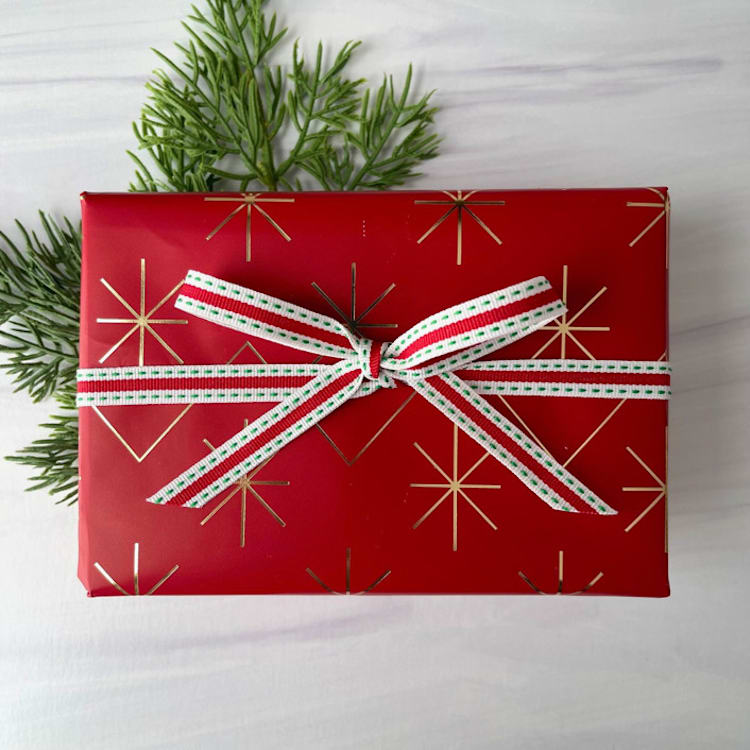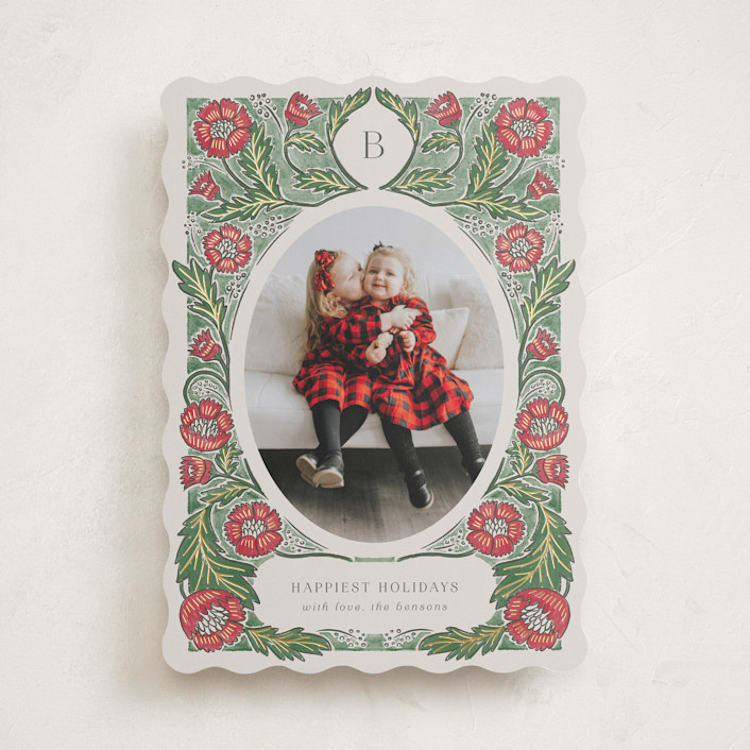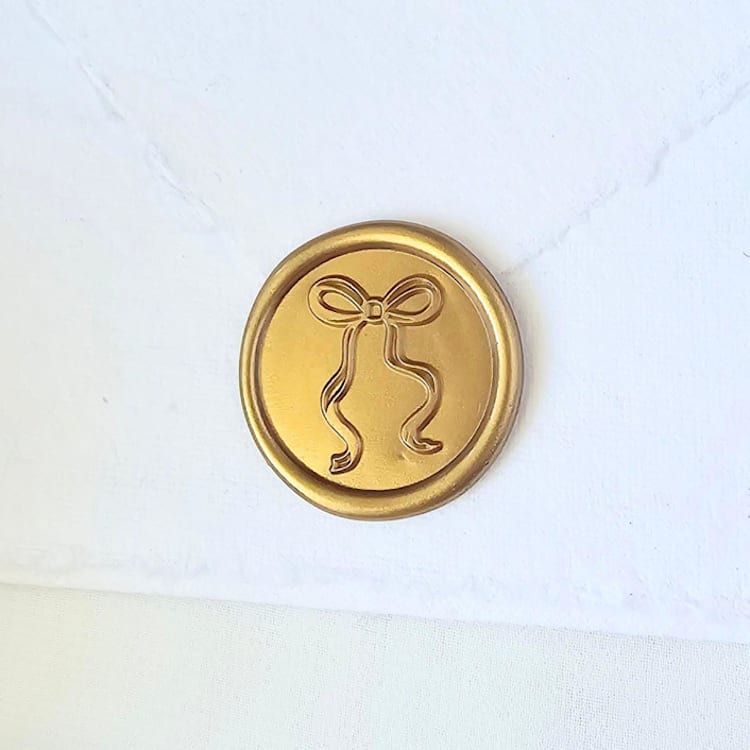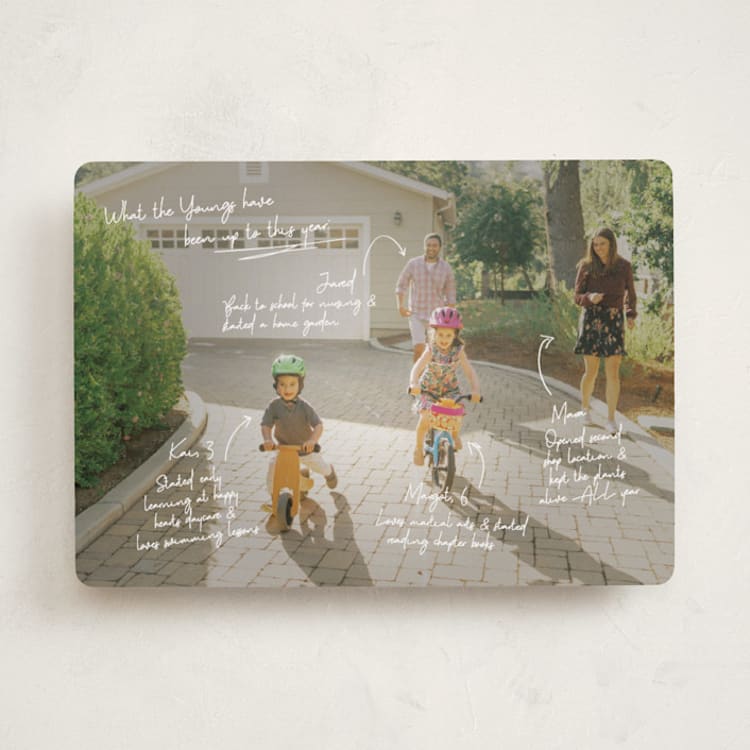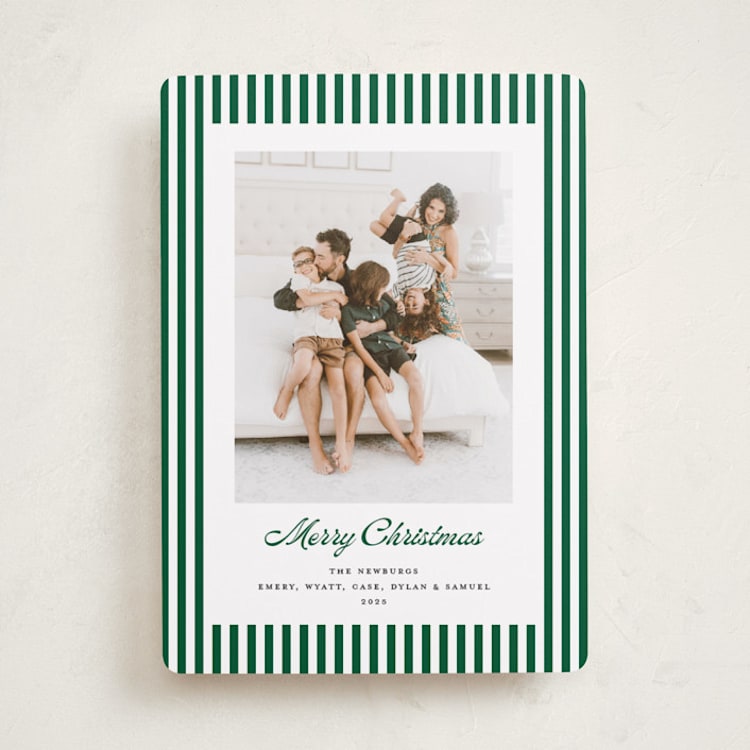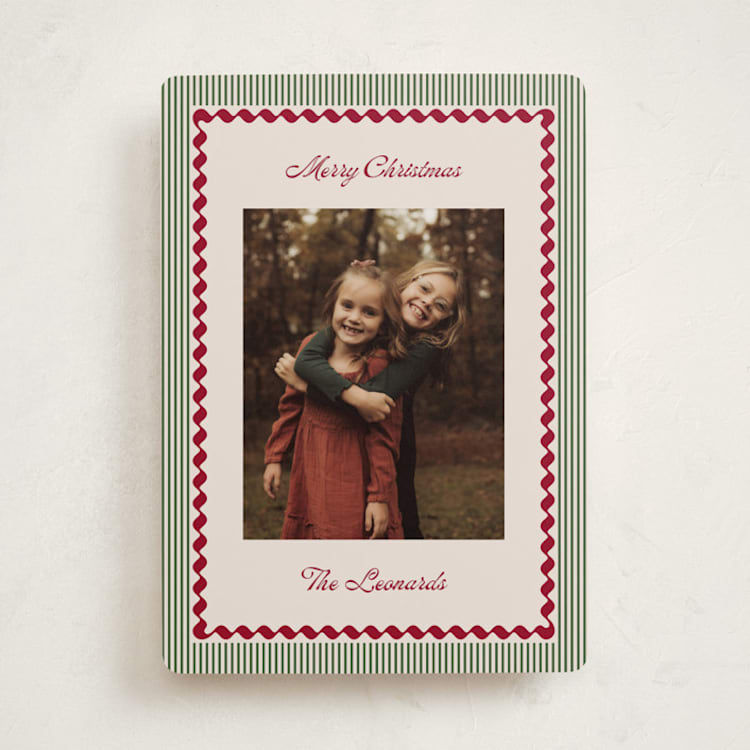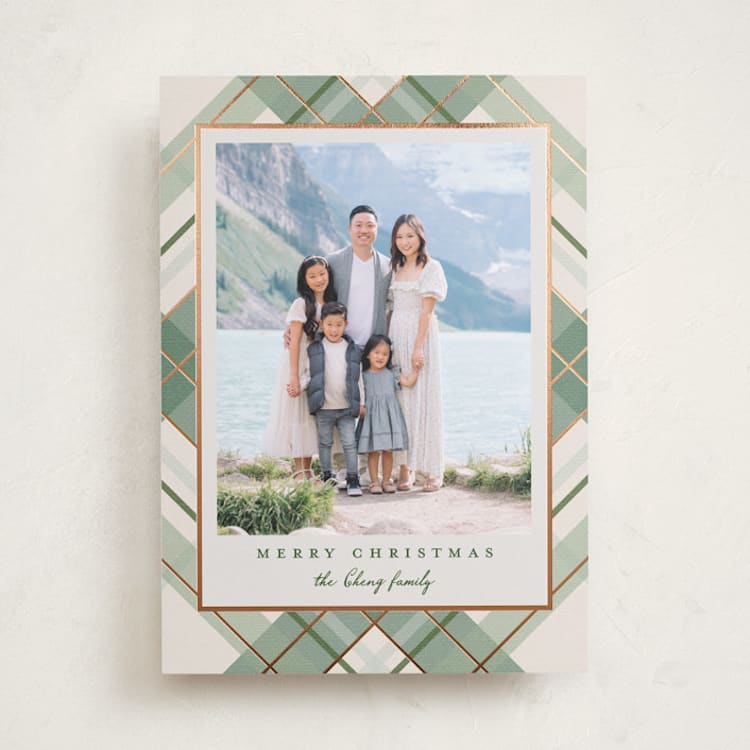Key takeaways:
- Physical cards engage multiple senses at once, creating memories that last far longer than digital messages.
- Cards satisfy our need to feel genuinely seen and valued, strengthening bonds across all generations.
- Personal touches transform obligatory greetings into treasured keepsakes people display year-round.
Remember the last time you walked past someone's refrigerator and noticed your holiday card still displayed there in March? That small moment captures something profound about why physical cards matter.
While texts disappear into the digital void, holiday cards become part of our homes — gathering on mantels, creating those displays that secretly make us feel loved and remembered. There's real psychology behind why we treasure these paper greetings and why sending them feels so satisfying.
Whether you're choosing from independent artists' creative designs or classic holiday motifs, each card becomes a small gift of presence. Here's why that matters more than ever.
The Neuroscience of Holiday Cheer: How Christmas Cards Light Up Your Brain
Ever wonder why opening a holiday card feels so different from reading an email? Your brain actually processes them completely differently, creating a perfect storm of emotions, touch, and memory all firing at once. While digital messages come and go, that physical card creates a full sensory experience, which is why you still remember certain holiday cards from years ago.
Sensory Psychology: Festive Colors, Textures, and Seasonal Scents
Holiday cards work their magic on multiple senses at once, creating a richer experience than digital messages ever could. Here's how each element makes receiving them feel special:
- Festive colors instantly shift your mood: Those traditional reds and greens, winter blues, or golden accents trigger automatic associations with warmth and celebration from holidays past.
- Textured papers create lasting impressions: Embossed surfaces, foil accents, and specialty finishes engage your sense of touch, signaling that someone chose something special just for you.
- Familiar scents unlock holiday memories: A card spritzed Elle Woods-style with subtle pine or cinnamon scents transports you straight back to favorite holiday moments.
- Paper weight signals thoughtfulness: Heavier cardstock feels substantial in your hands, communicating extra care in the selection.
- Unexpected details create delight: Ribbons, die-cuts, or layered designs add tactile surprises that make opening each card a small event.
All these details create an experience you can revisit every time you pass your card display. No notification on your phone can give you that kind of sensory replay.
Social Psychology Factors: Reciprocity and Connection
The psychology behind holiday cards taps into something we all feel but rarely think about:
- That "I should send them one too" feeling: When you receive a holiday card, you naturally want to reciprocate. It’s more than just etiquette; the urge creates this lovely back-and-forth that strengthens relationships.
- The effort speaks volumes: Taking time to choose, write, and mail a card tells someone "you're worth the extra steps" — and we all know the difference between that and a quick text.
- Family photos are mini time capsules: Sharing yearly updates and photos isn't just information — it's saying "I want you to be part of our story," even from afar.
- The anticipation is half the fun: There's something special about knowing card season is coming, checking the mail with extra hope, and having certain friends you always exchange with.
- Cards keep faraway friends close: That cousin in Seattle, your college roommate in Boston — holiday cards become the thread that keeps you connected when life gets busy.
The tradition creates a rhythm to our relationships. Each year's cards link past celebrations with present ones, reminding us that some connections deserve more than a quick "Happy Holidays!" in the group chat.
Age and Generational Differences: How Paper Cards Resonate Across Ages
Each generation brings its own relationship to the mailbox, and the reasons they treasure physical cards might surprise you:
| Generation | What Cards Mean to Them | Why It Resonates |
|---|---|---|
| Gen Z | A rare tactile experience | Growing up entirely digital makes physical mail feel special and worth collecting. |
| Millennials | Intentional over instant | They see cards as a meaningful break from social media and endless notifications. |
| Gen X | Evidence of real effort | They remember pre-digital life and recognize the time investment a mailed card represents. |
| Baby Boomers | Tradition and continuity | Cards connect them to decades of family celebrations and familiar holiday rhythms. |
The common thread? Whether it's Gen Z treating mail like it's retro-cool or Boomers keeping traditions alive, everyone loves getting cards for their own reasons. Younger folks go crazy for photo cards ("Did you see their new house?!"), while older recipients melt over handwritten notes.
The Personal Touch: How Customization Amplifies Holiday Joy
When you receive a card that feels made just for you — whether it's a family photo layout that made you laugh or a design that perfectly matches your style — your brain treats it as proof that someone took extra time specifically for you. These personal touches satisfy our need to feel truly seen, which is why customized cards often stay on display long after the holidays.
It's the difference between a generic "Happy Holidays" and a message that says "I know you, and you matter to me."
Holiday Messages That Touch Hearts
What you write in your holiday card matters more than you know — it's often the part recipients read twice and remember most.
Here are some personal touches that show recipients they truly matter:
- Reference shared memories: Mention that summer barbecue mishap or the conversation you had over coffee in March.
- Include inside jokes: Those little moments only you two understand create an instant connection.
- Share real-life updates: Your daughter's first steps, the new job, even challenges you've faced invite people into your story.
- Add specific wishes: Instead of generic greetings, try "Hope your new house fills with as much laughter as your old apartment did."
The most memorable messages follow one rule: keep it brief but heartfelt. A simple "Thinking of you and hoping your holidays bring the same joy you bring to others" resonates more than lengthy paragraphs. Short messages get to the heart of what matters, making them feel genuine rather than obligatory.
Personalized Designs That Connect with Recipients
The right design makes recipients think "this is so them" before reading a single word. Here's how visual choices create instant connection:
Start with Visual Style
Choose an aesthetic that reflects both your personality and resonates with your recipients.
- Minimalist botanicals: Appeals to friends who appreciate clean, modern aesthetics.
- Ornate vintage patterns: Resonates with relatives who value traditional craftsmanship.
- Bold geometric designs: Signals creativity and contemporary flair.
- Classic damask: Communicates sophistication and respect for tradition.
Layer in Holiday Symbols
Add icons that bridge your traditions with the recipient's celebrations.
- Traditional icons (holly, snowflakes, menorahs): Create an instant connection with those who share your cultural celebrations.
- Modern interpretations (abstract trees, stylized dreidels): Shows you honor tradition while embracing creativity.
- Nature elements: Connects with recipients who appreciate organic, timeless themes.
Finish with Typography
Select fonts that match the tone of your message and relationship.
- Script fonts: Feel intimate and personal, perfect for close friends and family.
- Clean sans-serif: Appears approachable and modern.
- Traditional serif: Conveys formality and respect.
- Playful fonts: Suggests casual warmth and creativity.
Put it all together and recipients know immediately what kind of card they're holding. And more importantly, that you chose something that feels right for your relationship.
Photo Cards to Share Your Memories
Family photo cards let the people who care about you witness your life unfolding. When recipients see your smiling faces, they get visual proof that you're thriving, and that genuine happiness becomes contagious.
What works best:
- Year-in-review layouts: Multiple snapshots from spring soccer to summer vacations create mini documentaries that help distant loved ones feel part of your journey.
- Mix of moments: Combine milestones with everyday joy — graduation photos alongside backyard BBQ candids tell a complete story.
- Authentic settings: Skip the studio if it doesn't feel like you. Some families come alive baking cookies in their kitchen or playing in their backyard. These genuine moments often make the most treasured cards.
"It can be fun to capture your personal holiday decor and do something fun together, like bake cookies." — Laura Michele, Photographer
Pro tip: Coordinate without matching. Choose 2-3 complementary colors. Start with mom's outfit and build from there. Soft neutrals photograph beautifully and won't date your cards, ensuring they'll look great on recipients' refrigerators long after the holidays end.
Seasonal Embellishments That Spark Delight
Beyond textures and colors, certain decorative choices turn your cards into mini celebrations that recipients treasure long after the holidays.
DIY Additions
- Photo corners or mini prints: Tuck in wallet-sized photos for grandparents who still carry them.
- Pressed flowers or leaves: Natural elements that recipients can keep or repurpose.
- Recipe cards: Share grandma's cookie recipe or your new holiday cocktail.
- Children's artwork: Let kids add drawings, handprints, or stickers for special recipients.
Finishing Touches That Elevate
- Wax seals: Add ceremonial flair that makes opening the envelope feel like an event.
- Custom postage stamps: Holiday-themed stamps show attention to detail before the card is even opened.
- Hand-lettered addresses: Personal calligraphy or careful handwriting shows individual attention.
- Envelope liners: Patterned paper inside creates a surprise moment during opening.
Small Surprises
- Confetti: A sprinkle of festive shapes that flutter out when opened.
- Gift cards or tea bags: Tuck in a little something extra for close friends.
- Bookmarks or ornaments: Flat, lightweight keepsakes that travel well in cards.
- Personal notes on sticky notes: Add last-minute thoughts without marking up the card.
These embellishments work because they communicate the gift of your time. Recipients instinctively understand that special touches require extra effort, transforming ordinary cards into keepsakes people save for years.
Originality Through Community-Sourced Art
The people you care about deserve more than mass-produced cards that hundreds of others are also sending. When you choose designs created by independent artists rather than corporate templates, you're giving recipients something they won't see in everyone else's holiday display.
This uniqueness serves a dual purpose. When you choose Minted cards, you're supporting independent designers who earn from their creativity while sending something genuinely distinctive. Recipients recognize the difference — they know you sought out something special rather than grabbing the first box at the store. That originality becomes part of your message: "You're worth the extra effort."
Frequently Asked Questions (FAQs) about Sending Meaningful Holiday Cards
Curious why physical cards still feel special? These frequently asked questions address what makes tangible greetings resonate in ways screens can't replicate.
When should you send holiday cards for maximum psychological impact?
Send your cards 2-3 weeks before the holiday for maximum display time and emotional impact. This timing allows recipients to showcase your card throughout their celebration period without it getting buried under last-minute holiday chaos. Physical cards have their strongest impact when they arrive during that sweet spot when people are excited about the upcoming holiday but not yet overwhelmed by it — giving your greeting the attention and appreciation it deserves.
How do you decide who should receive your holiday cards?
Your card list should include people who matter to you and those who would genuinely appreciate hearing from you during the holidays. Consider family members, close friends, mentors, neighbors, and colleagues who have made a positive impact on your year.
What makes a holiday card message memorable?
Memorable messages combine personal connection with genuine emotion. Share a specific memory from the past year, mention something you appreciate about the recipient, or include a heartfelt wish that relates to their current life situation. Handwritten notes add an extra layer of personal investment that recipients can feel and remember long after the holiday season ends.
Should you send separate cards for different holidays?
Sending separate cards works well when you want to celebrate multiple occasions that hold special significance. Send Halloween cards in October for spooky fun with friends who love the holiday, then follow with warm Thanksgiving cards in November for family gratitude, and Christmas or New Year cards in December for year-end reflection. This approach shows recipients that you're thinking of them during multiple special moments throughout the season.
How do photo cards vs. designed cards affect recipients differently?
Photo cards satisfy people's desire to see how your family has grown and changed throughout the year. They work especially well for sharing major life updates or milestone moments. Cards that forego photos in favor of creative or illustrative designs, on the other hand, focus attention on your message and artistic choices, making them perfect when you want the typography, colors, or illustrations to take center stage and reflect your creative personality.
What factors make holiday cards more impactful across different traditions?
Cards become more special when they acknowledge and respect the recipient's own traditions and values. Consider the holidays your recipients celebrate, their cultural background, and what symbols or messages would resonate most with them. Inclusive designs and thoughtful personalization show that you see and value the person behind the address, regardless of which specific holidays they observe.
Embrace the Time-Tested Psychology of Holiday Card Magic
There's something special about getting a real card in your mailbox. Physical holiday cards tap into our fundamental need for tangible connection — creating meaningful traditions that strengthen relationships and combat the isolation many feel during the holidays.
Minted's collection features hundreds of designs from independent artists, from photo cards that showcase your year's highlights to original artwork that reflects your unique style. Each card becomes a small gift that recipients display long after the season ends — proof of a genuine connection in our increasingly digital world.




